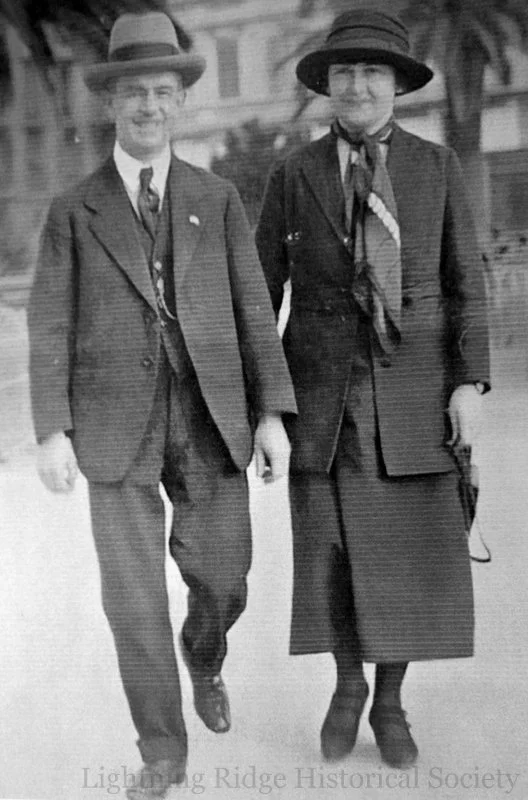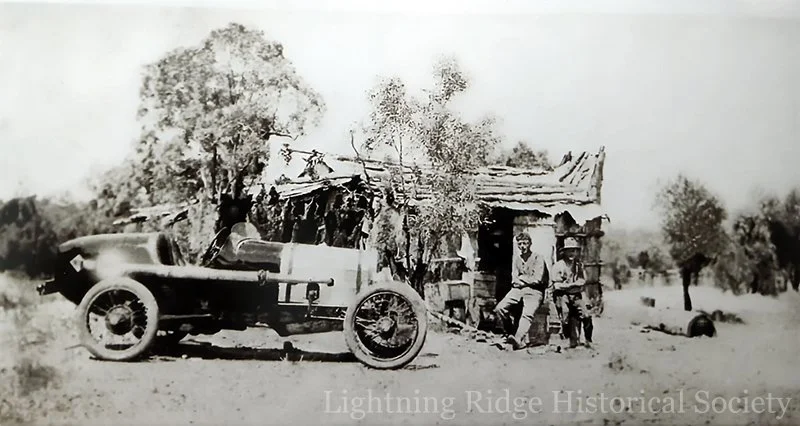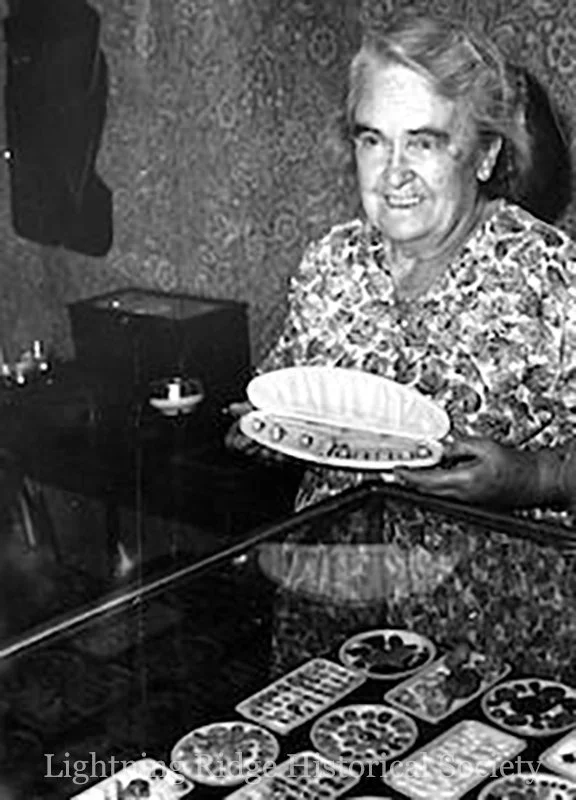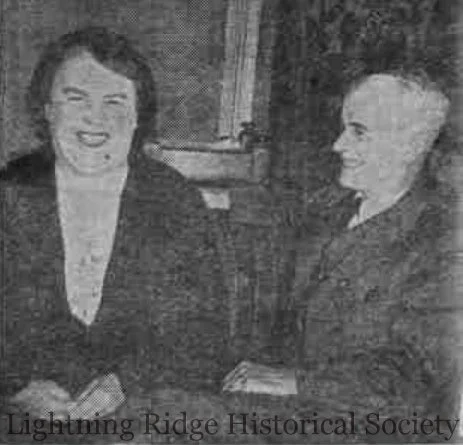Hector & Elsie Jenkins
Probably the only qualified gemmologist on the opal fields in the early years was Hector Jenkins. He travelled eastern Australia presenting gemstone exhibitions at shows and gatherings. That's where he met Elsie, a wonderful horsewoman and the Best Hack and Hunter in 1915.
They arrived in 1918 to mine on the Three Mile but gradually went into opal buying. Jack Souter was their regular mining partner.
The Jenkins had a passion for motor cars, and their Ford held pride of place at the camp. In 1923, they took a camping holiday to Tasmania, selling opal in Melbourne en-route. Three young emus and the dog went too. The write-up in the papers was complete with a photo of them with their 'travelling tucker' strapped to the side of the Ford — a freshly shot kangaroo!
In 1924, the miners of Lightning Ridge invited the Jenkins to take a collection of black opal to the British Empire Exhibition at Wembley.
Hector and Elsie Jenkins arrived back on the opal fields and were active during the Grawin Rush of 1926-1929. Their 1928 sporty “Fronty” Ford was the talk of the village. A Mr. Frontinac had modified a T-Model engine to overhead valves, hence the name “Fronty”, and the design took the Indianapolis 500 in America by storm.
1928 was also the year Jack McNicol found the famous Pandora stone at Angledool field. Elsie wanted that stone. She put down ten fresh £100 notes but McNicol declined the offer. He even refused the new “Fronty” Ford! Elsie was used to getting what she wanted, but not this time. History tells us that McNicol probably regretted his stubbornness.
In the 1930s, Elsie and Hector relocated to the Alice Springs area. They mined mica in the Hartz Ranges and sold it to the government for the war effort. In the 1950s, their home, “The Ritz” in Alice Springs, was a hive of activity. The Jenkins' opal collection was one of the best the industry has ever seen. It was auctioned in the late 1970s at the Sydney Opera House.
Hector Jenkins passed away on 24 October 1953, Elsie Jenkins passed away on 9 September 1974. Both are buried at Alice Springs Memorial Cemetery.
Article: Research by Leisa Carney, edited by Russell Gawthorpe. LRHS research compiled by Len Cram and Barbara Moritz. Sources: The Lightning Ridge Book, Stuart Lloyd, 1967, pp. 16, 41; Lightning Ridge - The Home of the Black Opal: Unique to the World, Gan Bruce, 1983, p. 77; Lightning Flash Newspaper, 11 February 1928; The occurrence of opal at Lightning Ridge and Grawin, with geological notes on County Finch, J. W Whiting & R. E. Relph, 1958; They Struck Opal!, E. F. Murphy, 1948, p. 162; Walgett Spectator, 3 May 1923, 9 August 1923, 15 April 1926; ‘A Miner’s Wife Meets the King and Queen’, The Telegraph, 18 August 1926, p. 16.






